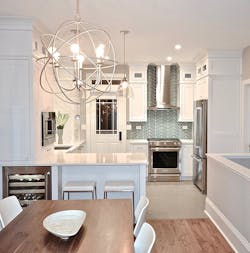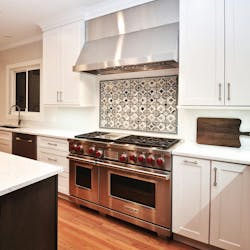Starting Over
Sometimes moving a business is a long, thought-out process, and sometimes your husband gets an amazing job offer and you decide right then and there to relocate-—mine was the latter. Either way, you have to adjust to the new market.
In Chicago, where I started Kitchen Vitality Design, I was fairly well established. My new location was more than 700 miles away in Charlotte, N.C. Here are the strategies I used in order to ensure success.
Know Your Business
Understanding what role you want to fill upon arrival is imperative to early planning. A large business will need to lay down infrastructure and have a client base ready and waiting. A small business can be less aggressive in its incursion. I knew I wanted to be a small business, and saved up a nest egg to give me six months to get established post-move. That was plenty of time to setup a stream of clients, professional partnerships, and my studio.
The Bureaucratic Stuff
No. 1 on my list of actionable things to do was dissolve my old business in Illinois and form a new LLC in North Carolina. Your federal tax ID will carry over, but your state ID will not. Most states are pretty similar in their registration requirements, but in North Carolina specifically, we had to create an Articles of Organization—basically a packet of identifying materials for the business—and pay a $120 filing fee to the State.
Number one on my list of truly actionable things to do was dissolve my old business in Illinois and form and register a new LLC in North Carolina.
Client Base Building
Client base was a top priority. My networking started informally, when we registered our kids for school.
Grassroots-style research of who your clientele will be is vital to understanding how to properly serve them. In discussions with other parents, I found that not only did Southerners love their designers (to the point of bragging) but that: 1. They were willing to pay for professional services; and 2. There was a big demand for those services. Lining up clients became as easy as telling them I was a designer.
As I was building my client base, I was also developing relationships with subcontractors and vendors. Local NKBA and NARI chapters were invaluable in this effort, as they introduced me to the local industry players, with whom I’ve been able to draw inspiration and insight—like the fact that, unlike in Chicago, Charlotte GCs don’t hire trim carpenters to install cabinets, so I need to have a trim carpenter contact.
I was also able to connect with local professionals through Instagram. If I see a kitchen with a cool feature or piece of furniture, I can usually find information on the post about where the designer got the materials or product.
But while associations and social media were valuable for making contacts, deciding who I would align myself with long term was something I wanted to determine for myself. The early vetting process was as simple as early impressions. If I was trying to connect with someone through phone or email and they didn’t respond in a timely manner, or responded too curtly, it was clear it wasn’t going to work. I would also take trips out to see vendors and subcontractors, and would use that meeting as an indicator for how we would work together. After a year in N.C., I have a full contacts list.

